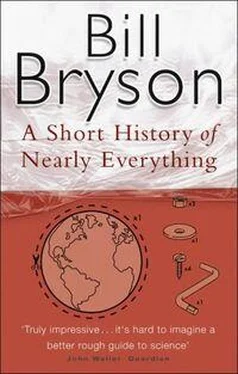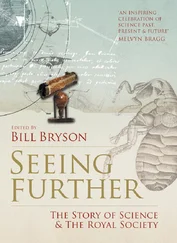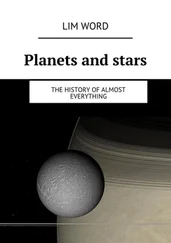For half a century people had been trying to work out the size of the Earth, mostly by making very exacting measurements. One of the first such attempts was by an English mathematician named Richard Norwood. As a young man Norwood had traveled to Bermuda with a diving bell modeled on Halley’s device, intending to make a fortune scooping pearls from the seabed. The scheme failed because there were no pearls and anyway Norwood’s bell didn’t work, but Norwood was not one to waste an experience. In the early seventeenth century Bermuda was well known among ships’ captains for being hard to locate. The problem was that the ocean was big, Bermuda small, and the navigational tools for dealing with this disparity hopelessly inadequate. There wasn’t even yet an agreed length for a nautical mile. Over the breadth of an ocean the smallest miscalculations would become magnified so that ships often missed Bermuda-sized targets by dismaying margins. Norwood, whose first love was trigonometry and thus angles, decided to bring a little mathematical rigor to navigation and to that end he determined to calculate the length of a degree.
Starting with his back against the Tower of London, Norwood spent two devoted years marching 208 miles north to York, repeatedly stretching and measuring a length of chain as he went, all the while making the most meticulous adjustments for the rise and fall of the land and the meanderings of the road. The final step was to measure the angle of the Sun at York at the same time of day and on the same day of the year as he had made his first measurement in London. From this, he reasoned he could determine the length of one degree of the Earth’s meridian and thus calculate the distance around the whole. It was an almost ludicrously ambitious undertaking-a mistake of the slightest fraction of a degree would throw the whole thing out by miles-but in fact, as Norwood proudly declaimed, he was accurate to “within a scantling”-or, more precisely, to within about six hundred yards. In metric terms, his figure worked out at 110.72 kilometers per degree of arc.
In 1637, Norwood’s masterwork of navigation, The Seaman’s Practice , was published and found an immediate following. It went through seventeen editions and was still in print twenty-five years after his death. Norwood returned to Bermuda with his family, becoming a successful planter and devoting his leisure hours to his first love, trigonometry. He survived there for thirty-eight years and it would be pleasing to report that he passed this span in happiness and adulation. In fact, he didn’t. On the crossing from England, his two young sons were placed in a cabin with the Reverend Nathaniel White, and somehow so successfully traumatized the young vicar that he devoted much of the rest of his career to persecuting Norwood in any small way he could think of.
Norwood’s two daughters brought their father additional pain by making poor marriages. One of the husbands, possibly incited by the vicar, continually laid small charges against Norwood in court, causing him much exasperation and necessitating repeated trips across Bermuda to defend himself. Finally in the 1650s witch trials came to Bermuda and Norwood spent his final years in severe unease that his papers on trigonometry, with their arcane symbols, would be taken as communications with the devil and that he would be treated to a dreadful execution. So little is known of Norwood that it may in fact be that he deserved his unhappy declining years. What is certainly true is that he got them.
Meanwhile, the momentum for determining the Earth’s circumference passed to France. There, the astronomer Jean Picard devised an impressively complicated method of triangulation involving quadrants, pendulum clocks, zenith sectors, and telescopes (for observing the motions of the moons of Jupiter). After two years of trundling and triangulating his way across France, in 1669 he announced a more accurate measure of 110.46 kilometers for one degree of arc. This was a great source of pride for the French, but it was predicated on the assumption that the Earth was a perfect sphere-which Newton now said it was not.
To complicate matters, after Picard’s death the father-and-son team of Giovanni and Jacques Cassini repeated Picard’s experiments over a larger area and came up with results that suggested that the Earth was fatter not at the equator but at the poles-that Newton, in other words, was exactly wrong. It was this that prompted the Academy of Sciences to dispatch Bouguer and La Condamine to South America to take new measurements.
They chose the Andes because they needed to measure near the equator, to determine if there really was a difference in sphericity there, and because they reasoned that mountains would give them good sightlines. In fact, the mountains of Peru were so constantly lost in cloud that the team often had to wait weeks for an hour’s clear surveying. On top of that, they had selected one of the most nearly impossible terrains on Earth. Peruvians refer to their landscape as muy accidentado -“much accidented”-and this it most certainly is. The French had not only to scale some of the world’s most challenging mountains-mountains that defeated even their mules-but to reach the mountains they had to ford wild rivers, hack their way through jungles, and cross miles of high, stony desert, nearly all of it uncharted and far from any source of supplies. But Bouguer and La Condamine were nothing if not tenacious, and they stuck to the task for nine and a half long, grim, sun-blistered years. Shortly before concluding the project, they received word that a second French team, taking measurements in northern Scandinavia (and facing notable discomforts of their own, from squelching bogs to dangerous ice floes), had found that a degree was in fact longer near the poles, as Newton had promised. The Earth was forty-three kilometers stouter when measured equatorially than when measured from top to bottom around the poles.
Bouguer and La Condamine thus had spent nearly a decade working toward a result they didn’t wish to find only to learn now that they weren’t even the first to find it. Listlessly, they completed their survey, which confirmed that the first French team was correct. Then, still not speaking, they returned to the coast and took separate ships home.
Something else conjectured by Newton in the Principia was that a plumb bob hung near a mountain would incline very slightly toward the mountain, affected by the mountain’s gravitational mass as well as by the Earth’s. This was more than a curious fact. If you measured the deflection accurately and worked out the mass of the mountain, you could calculate the universal gravitational constant-that is, the basic value of gravity, known as G-and along with it the mass of the Earth.
Bouguer and La Condamine had tried this on Peru’s Mount Chimborazo, but had been defeated by both the technical difficulties and their own squabbling, and so the notion lay dormant for another thirty years until resurrected in England by Nevil Maskelyne, the astronomer royal. In Dava Sobel’s popular book Longitude , Maskelyne is presented as a ninny and villain for failing to appreciate the brilliance of the clockmaker John Harrison, and this may be so, but we are indebted to him in other ways not mentioned in her book, not least for his successful scheme to weigh the Earth. Maskelyne realized that the nub of the problem lay with finding a mountain of sufficiently regular shape to judge its mass.
At his urging, the Royal Society agreed to engage a reliable figure to tour the British Isles to see if such a mountain could be found. Maskelyne knew just such a person-the astronomer and surveyor Charles Mason. Maskelyne and Mason had become friends eleven years earlier while engaged in a project to measure an astronomical event of great importance: the passage of the planet Venus across the face of the Sun. The tireless Edmond Halley had suggested years before that if you measured one of these passages from selected points on the Earth, you could use the principles of triangulation to work out the distance to the Sun, and from that calibrate the distances to all the other bodies in the solar system.
Читать дальше












